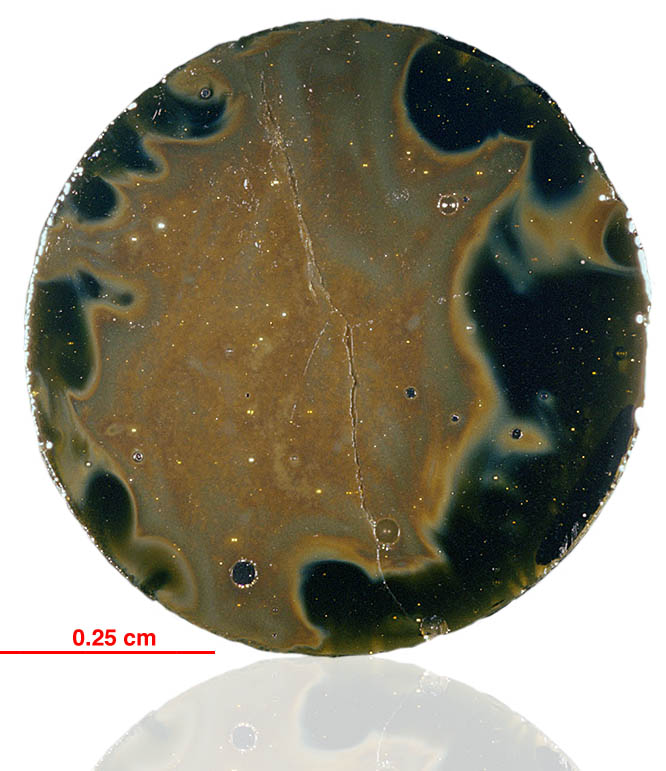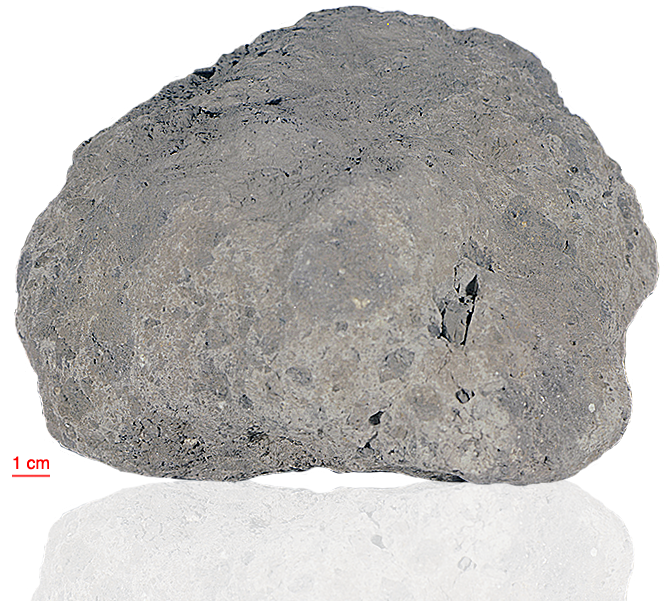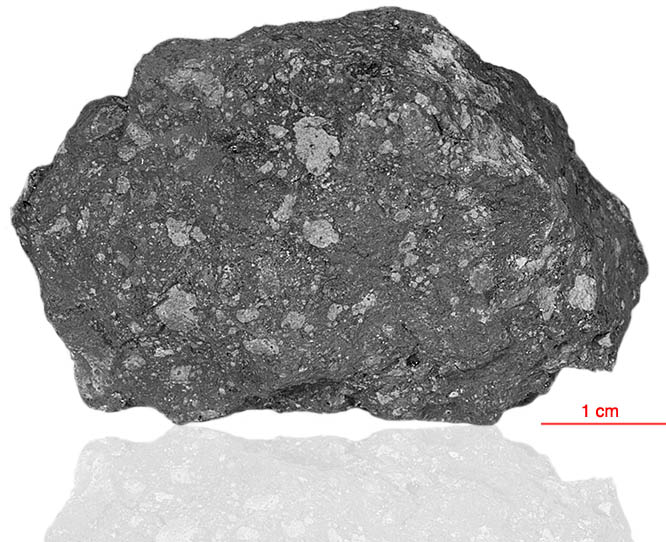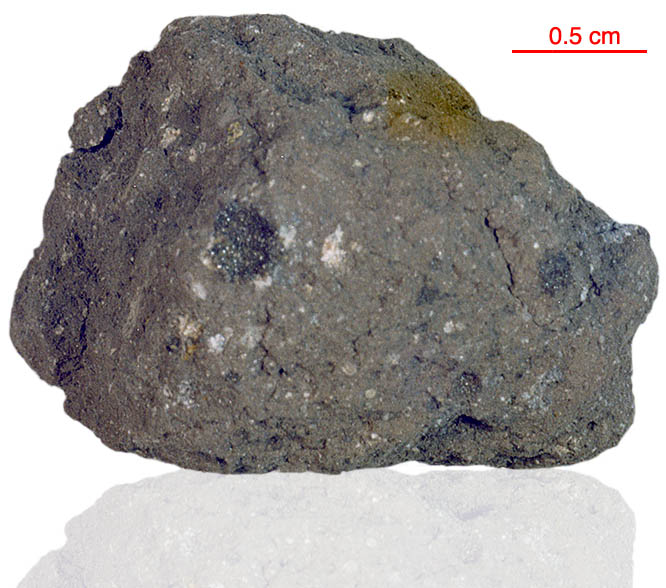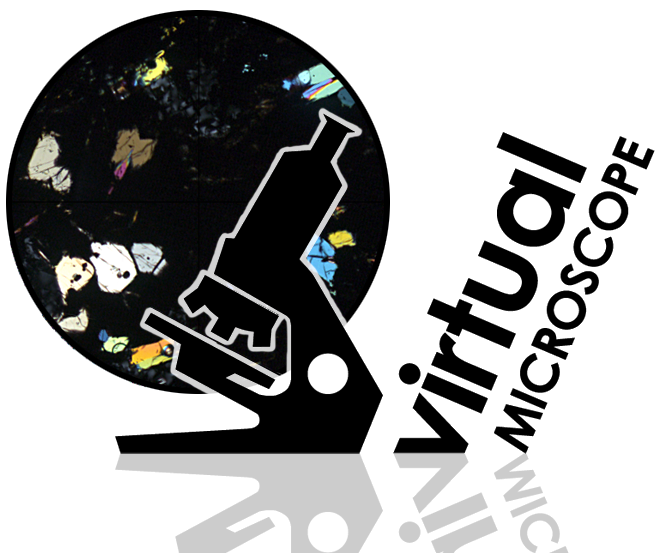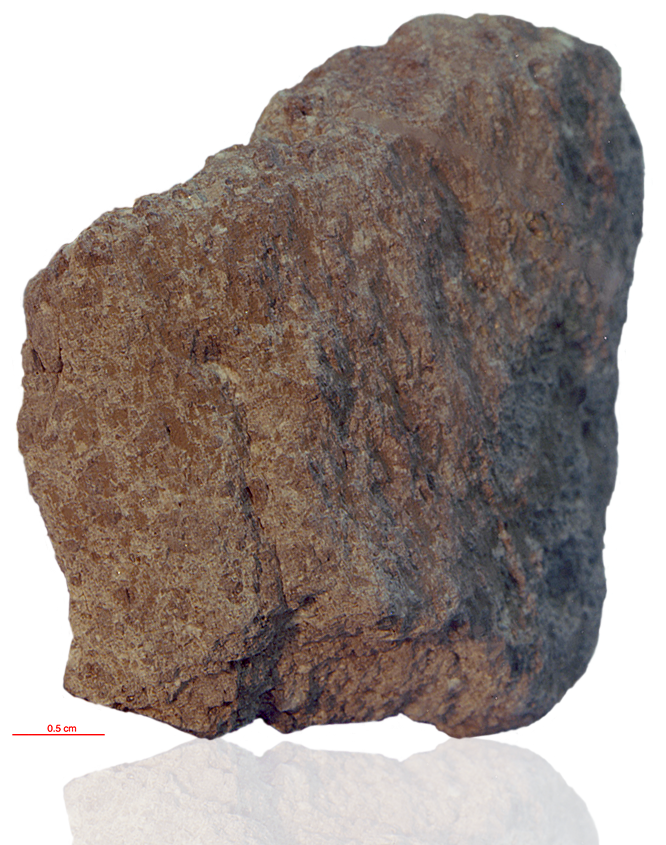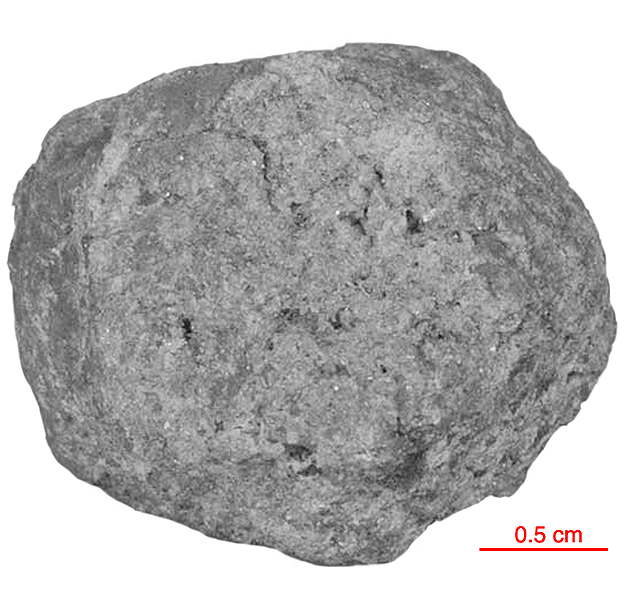
Fact sheet
14276 was collected as part of the Apollo 14 “comprehensive sample”. A circle about 14 meters in diameter was drawn and every rock on the surface placed in the same bag along with large soil samples 14259 and 14261. It is a fine-grained sub-ophitic basalt with fine laths of plagioclase interlocking with and penetrating pyroxene grains. Pyroxene cores are low-Ca orthopyroxene, surrounded by progressively higher Ca pyroxene. There is no olivine in this sample.
KREEP is an acronym built from the letters K (the atomic symbol for potassium), REE (Rare Earth Elements) and P (for phosphorus). It is a geochemical component of some lunar impact breccia and basaltic rocks.
The sample weighed 12.75 grams before analysis and is 3.88±0.01 billion years old (Rb/Sr).
The mounting resin of this thin section has deteriorated over time and now contains clusters of feathery crystallites within and around the margins of the thin section. The photograph of this section in Charles Meyer’s Lunar Compendium does not show this deterioration.
Further details of this and other Apollo samples are here: http://curator.jsc.nasa.gov/lunar/
The Apollo 14 landing site was in a region formed by impact-basin debris.
Most of the 42 kilograms of rocks and soil collected on Apollo 14 are breccias (rocks that are composed of fragments of other, older rocks). In some cases, the rock fragments that form a breccia are themselves breccias. Such rocks obviously have experienced complex histories with multiple generations of impact events. Some breccias were heated enough that some of the material in the rock was melted.
Apollo 14 was launched on 31 January 1971.

